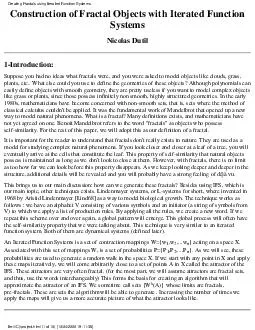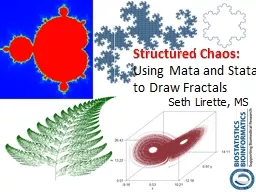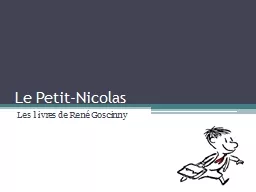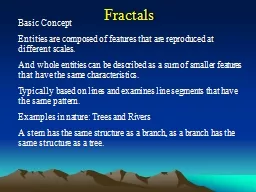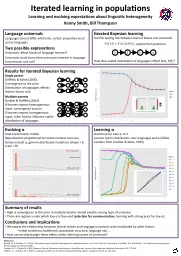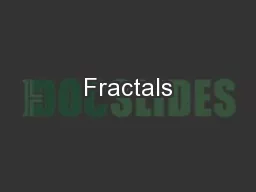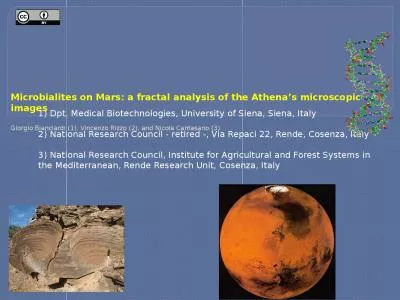PDF-Construction of Fractal Objects with Iterated Function Systems Nicolas Dutil Introduction
Author : test | Published Date : 2014-12-27
What else could you use to define the geometries of these objects Although polynomials can easily define objects with smooth geometry they are pretty useless if
Presentation Embed Code
Download Presentation
Download Presentation The PPT/PDF document "Construction of Fractal Objects with Ite..." is the property of its rightful owner. Permission is granted to download and print the materials on this website for personal, non-commercial use only, and to display it on your personal computer provided you do not modify the materials and that you retain all copyright notices contained in the materials. By downloading content from our website, you accept the terms of this agreement.
Construction of Fractal Objects with Iterated Function Systems Nicolas Dutil Introduction: Transcript
Download Rules Of Document
"Construction of Fractal Objects with Iterated Function Systems Nicolas Dutil Introduction"The content belongs to its owner. You may download and print it for personal use, without modification, and keep all copyright notices. By downloading, you agree to these terms.
Related Documents

